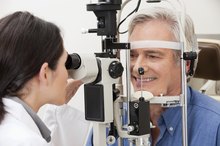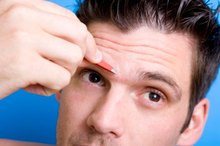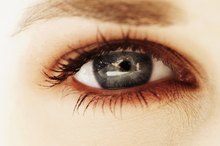Bumps on the White Part of the Eye
Bumps on the white part of the eye might be so small that they are only a cosmetic annoyance or they can be so large that they hinder your vision. Most bumps are harmless and will grow and shrink over time, but sometimes these bumps signal a more serious medical condition.
If you are experiencing serious medical symptoms, seek emergency treatment immediately.
Identification
The white part of your eye, called the sclera, has tiny pink blood vessels running across it, but it does not generally have bumps on it. If you see small, light-yellow colored bumps, you’re most likely seeing pinguecula. These pinguecula bumps may look like pimples, and most often appear on the nasal side of the eye. However, pinguecula can appear anywhere on the sclera.
- The white part of your eye, called the sclera, has tiny pink blood vessels running across it, but it does not generally have bumps on it.
- These pinguecula bumps may look like pimples, and most often appear on the nasal side of the eye.
Causes
Types of Eye Lesions
Learn More
Irritation from the elements, including dust, wind and the sun, can cause pinguecula. Researchers believe the ultraviolet light from the sun might also cause pinguecula, according to All About Vision 2. If you work in the sun or work with materials that might irritate your eye, you have a higher risk of getting pinguecula. Welding significantly increases your risk for pinguecula, according to The New York Times Health Guide 3.
Treatment
Treatment for pinguecula depends on the severity of your symptoms. A mild case of pinguecula does not require medical treatment, reports All About Vision 2. If your eye feels dry or feels as though you have a foreign object in it, apply lubricating eye drops. To relieve swelling, your doctor might prescribe steroid eye drops or nonsteroidal anti-inflammatory drugs. For a more severe case of pinguecula that interferes with your vision, your doctor might have to surgically remove the pinguecula.
- Treatment for pinguecula depends on the severity of your symptoms.
- For a more severe case of pinguecula that interferes with your vision, your doctor might have to surgically remove the pinguecula.
Prevention
Types of Growths on the Eye
Learn More
Protecting your eyes helps prevent pinguecula 3. When you’re outside, wear wrap-sunglasses and a wide-brim hat. If you work with materials that might irritate and dry out your eyes, always wear the proper eyewear, and lubricate your eyes with over-the-counter saline eye drops.
Warnings
Pinguecula can lead to pterygia, which are wedge-shaped or wing-shaped growths of benign fibrous tissue with blood vessels, typically located on the surface of the sclera. Pterygia may cause vision problems. Pinguecula is one of many symptoms of type 1 Gaucher's disease 4. Caused by excessive levels of harmful fatty substances in your liver, spleen, lungs, bone marrow or your brain, Gaucher’s disease may cause:
- organ enlargement
- bone pain
If you experience fatigue, bruising, nosebleeds, bone pain or fractures with the bumps on your eye, you should contact your doctor, because these are signs of type 1 Gaucher’s disease.
- Pinguecula can lead to pterygia, which are wedge-shaped or wing-shaped growths of benign fibrous tissue with blood vessels, typically located on the surface of the sclera.
Related Articles
References
Writer Bio
Ivy Morris specializes in health, fitness, beauty, fashion and music. Her work has appeared in "Sacramento News and Review," "Prosper Magazine" and "Sacramento Parent Magazine," among other publications. Morris also writes for medical offices and legal practices. She holds a Bachelor of Arts in government-journalism from Sacramento State University.









